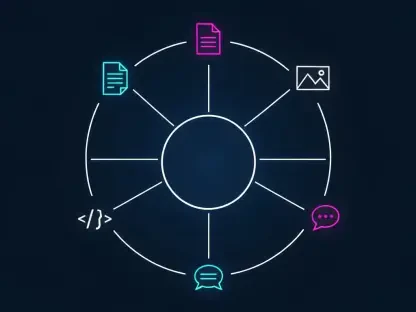As digital evolution brings more sophisticated cyber threats, the landscape of ransomware is changing, with Mamona ransomware showcasing a trend that leans towards simplicity. Mamona, a straightforward ransomware strain, is gaining traction due to its ease of use and full offline operation, making it attractive to less skilled cybercriminals. Its simplicity contrasts sharply with the complexity of ransomware-as-a-service (RaaS), creating a notable shift in the cybercrime domain. This evolution in ransomware methodology demands attention as it highlights a change in criminal focus from intricate operations to more straightforward, yet effective, techniques.
The Rise of Mamona Ransomware
A New Threat on the Horizon
Mamona ransomware distinguishes itself from its predecessors by staying fully offline and employing basic encryption techniques, which challenges existing cybersecurity measures. Unlike sophisticated ransomware solutions often requiring complex infrastructure, Mamona operates locally, eliminating command-and-control server requirements. This characteristic allows it to evade detection by many conventional security systems. The strain utilizes low-level memory manipulation and arithmetic for encryption, eschewing standard cryptographic libraries and minimizing intrusion complexity. The absence of external connections limits forensic investigation possibilities, as Mamona self-deletes its executable after infecting a system, leaving significantly fewer traces. This characteristic makes Mamona particularly dangerous due to its quiet nature, posing a serious risk despite its encryption method’s seemingly basic nature.
Accessibility and Impact
Mamona’s rise in popularity is partly attributed to the leaking of its builder online, effectively putting sophisticated ransomware tools in the hands of less experienced cybercriminals. Previously associated with the BlackLock group, Mamona is now reportedly under the control of DragonForce, offering cybercriminals a powerful weapon without needing extensive technical knowledge. The ransomware encrypts files locally and adds the .HAes extension to compromised files, exerting pressure on victims through threats of potential data exposure. Currently, Mamona focuses on dropping ransom notes in folders and collecting minimal reconnaissance data such as system name and language, distinguishing its approach from data extraction prevalent in other strains. This silent threat demonstrates how simplicity can amplify its impact, challenging conventional cybersecurity defenses that often assume extensive network interactions.
Mamona’s Implications for Cybersecurity
Monitoring Local Activity
The emergence of Mamona ransomware underscores the importance of vigilant local system monitoring and adaptive cybersecurity strategies. Security teams must equip themselves to respond to Mamona’s unique threat profile, as traditional network-focused defenses may prove insufficient. Implementing a dynamic analysis method, such as sandboxing, can offer potential opportunities to counteract this elusive ransomware strain. Sandboxing provides the capability to simulate and observe ransomware behavior in a controlled environment, giving cybersecurity professionals essential insight into defensive tactics. To tackle the challenge Mamona poses, a proactive stance in monitoring local activity is critical for detecting and mitigating imminent threats.
Strategy Adaptation for Defense
Mamona’s simplicity suggests a need for a paradigm shift in cybersecurity strategies, pushing teams to adapt their defenses to counter emerging ransomware challenges effectively. The trend towards more effortless deployment and advanced evasion techniques over mere complexity presents unique challenges and requires innovative solutions. Security systems must evolve to anticipate and confront these developments, strengthening defenses against ransomware that can stealthily evade traditional detection methods. The inkling towards simpler yet efficient malicious software demands a focus on flexibility and responsiveness, encouraging cybersecurity experts to prioritize adaptive defenses in the face of evolving threats.
A Glimpse into the Future
As digital advancements lead to increasingly sophisticated cyber threats, the realm of ransomware is undergoing notable changes, with Mamona ransomware exemplifying a trend towards simplicity. The Mamona strain, characterized by its straightforward nature, is becoming more popular due to its low complexity and ability to function fully offline. This makes it particularly appealing to less experienced cybercriminals who can deploy it without deep technical expertise. The simplicity of Mamona stands in stark contrast to the intricate models of ransomware-as-a-service (RaaS), signifying a significant shift within the cybercrime world. This evolution in ransomware methods demands careful scrutiny as it underscores a pivot in criminal strategies—from complex, multi-layered operations to just as effective but simpler tactics. As cybercriminals focus on leveraging uncomplicated methods for achieving devastating impact, cybersecurity measures must adapt to counteract these emerging threats in an evolving digital landscape.









